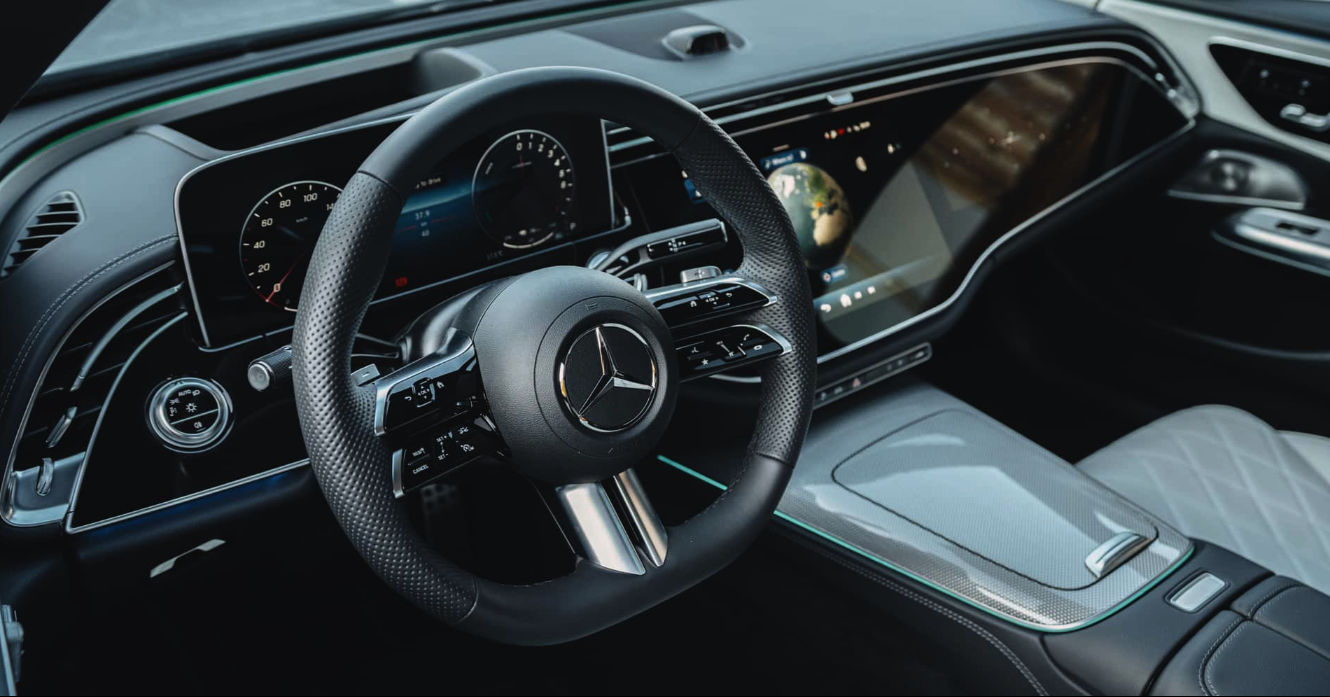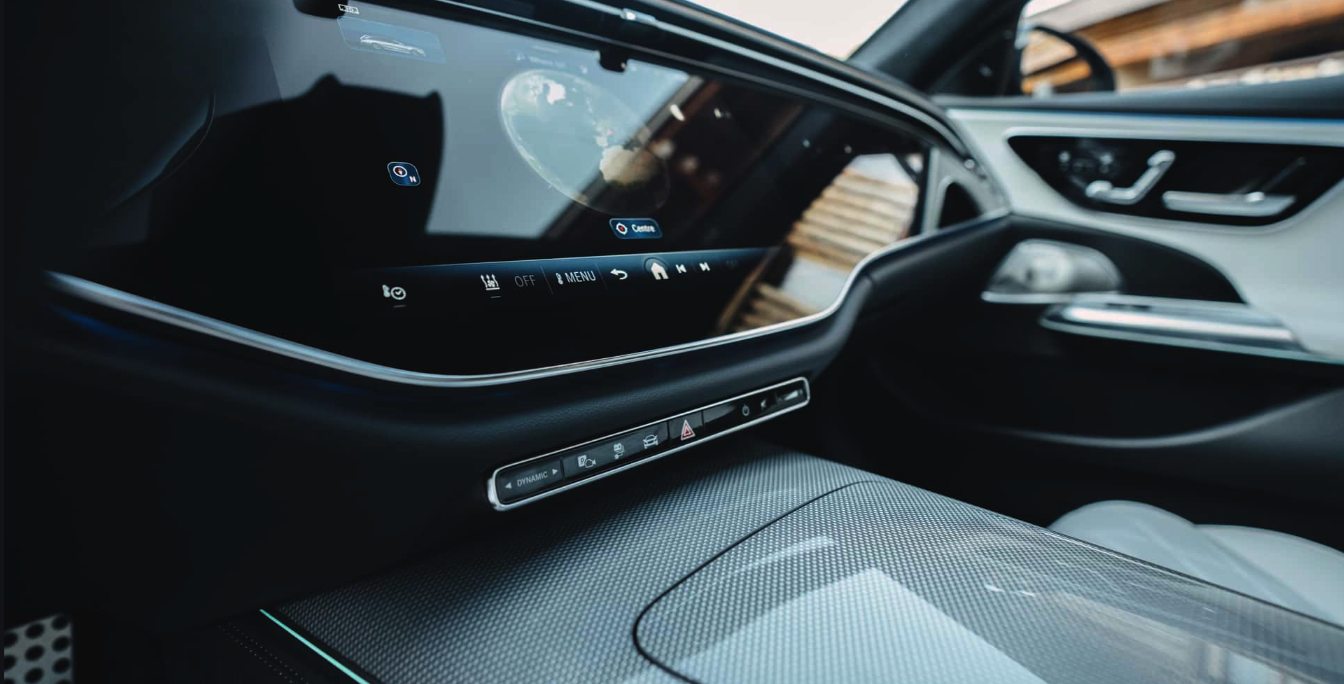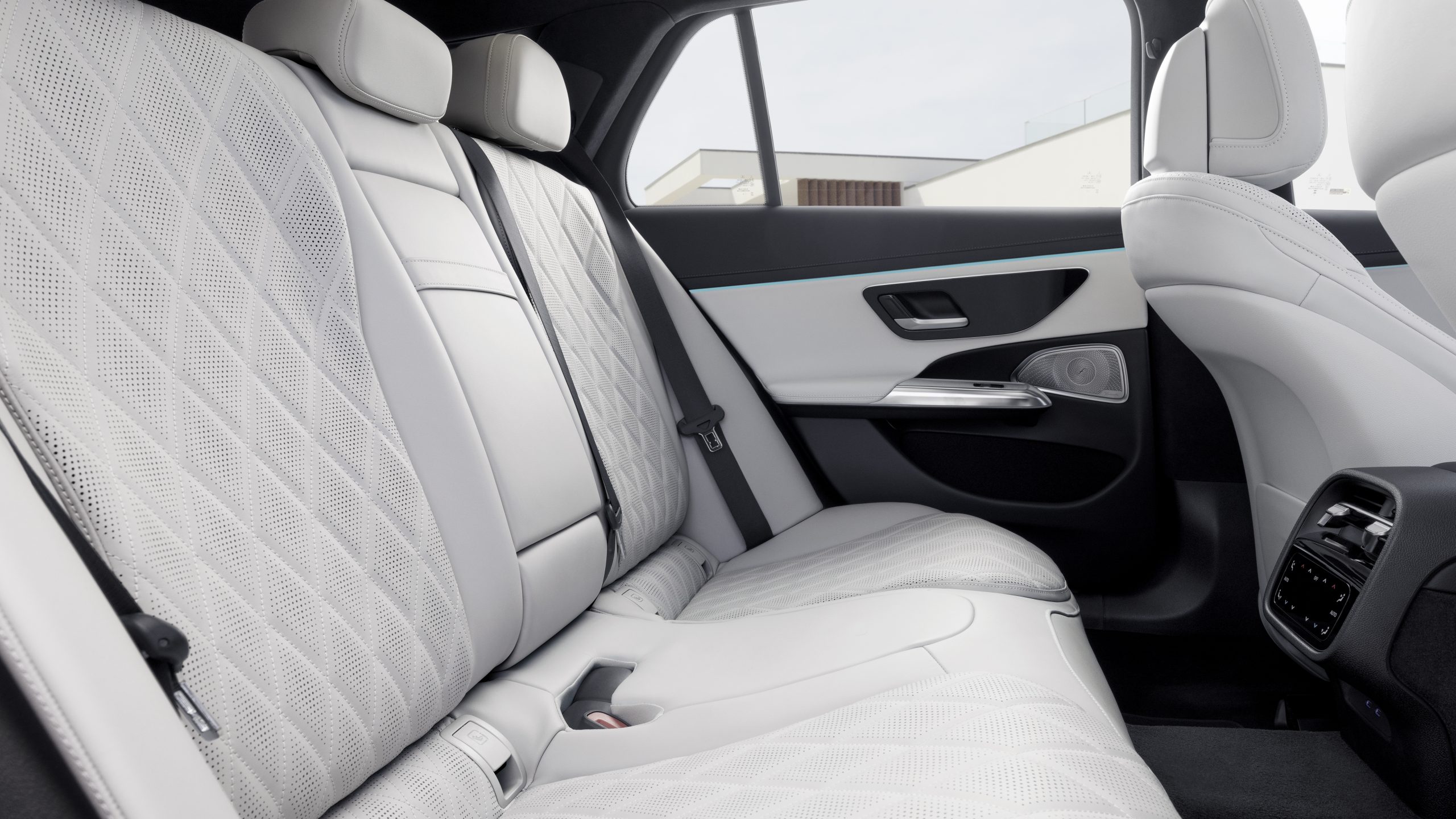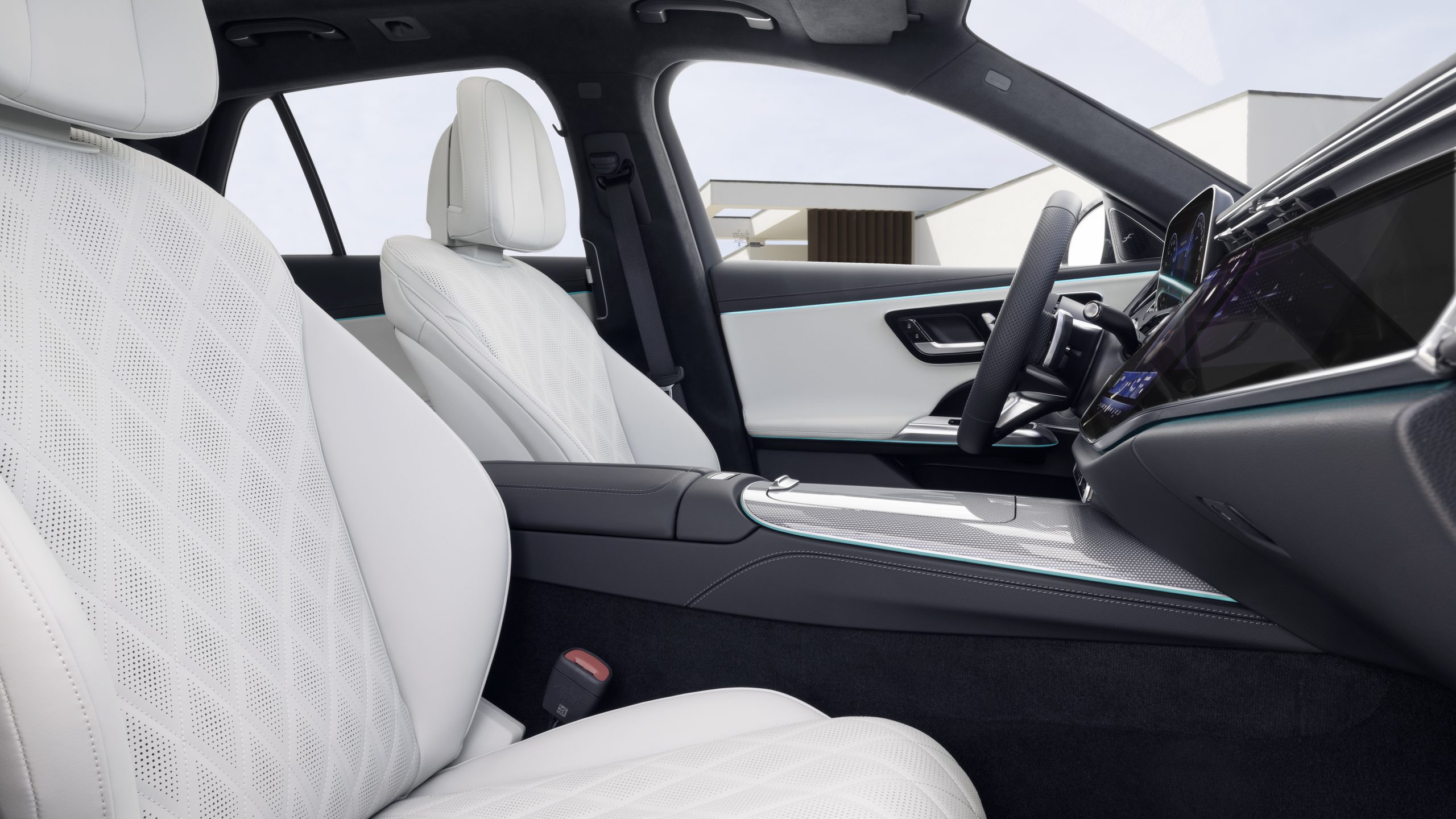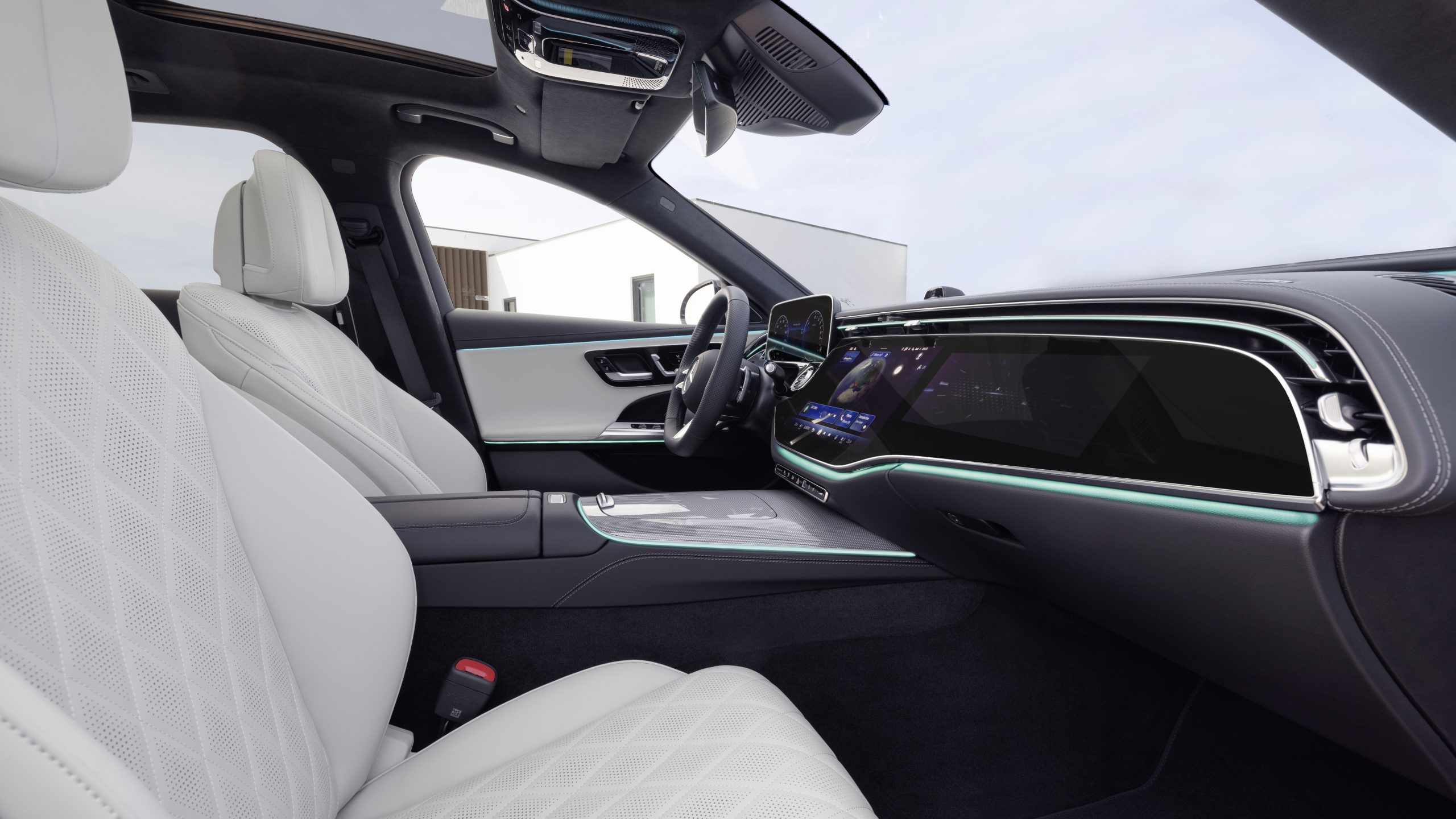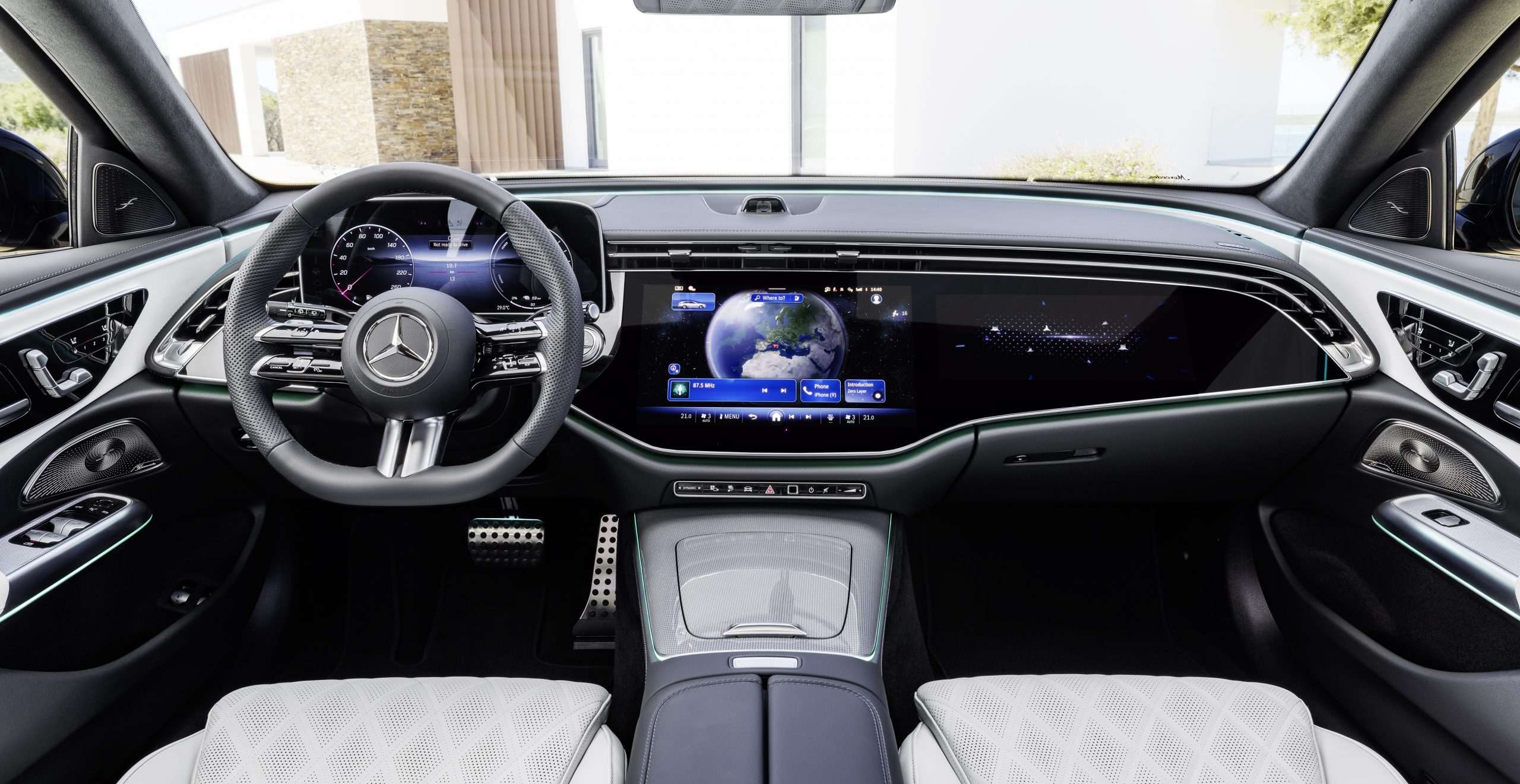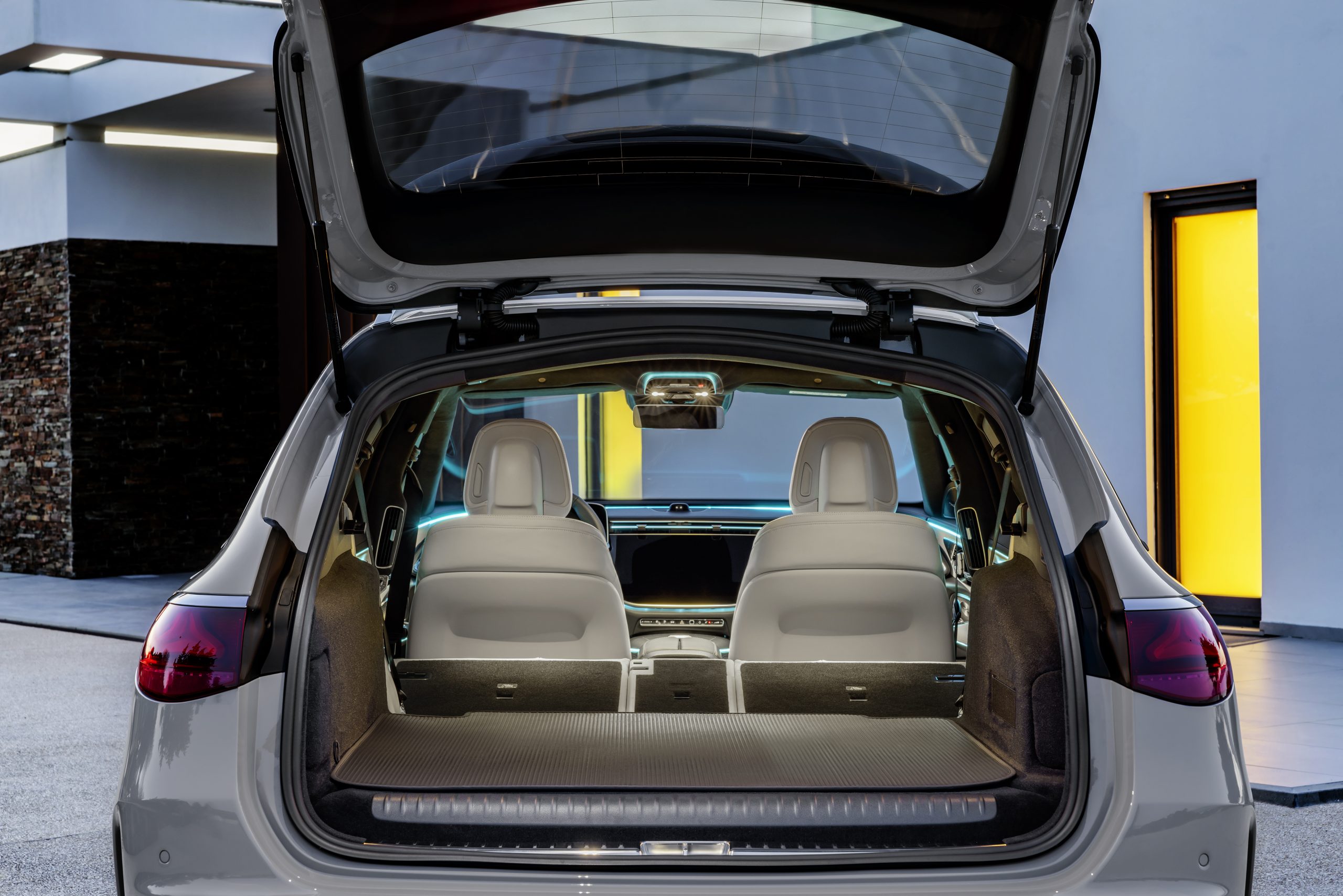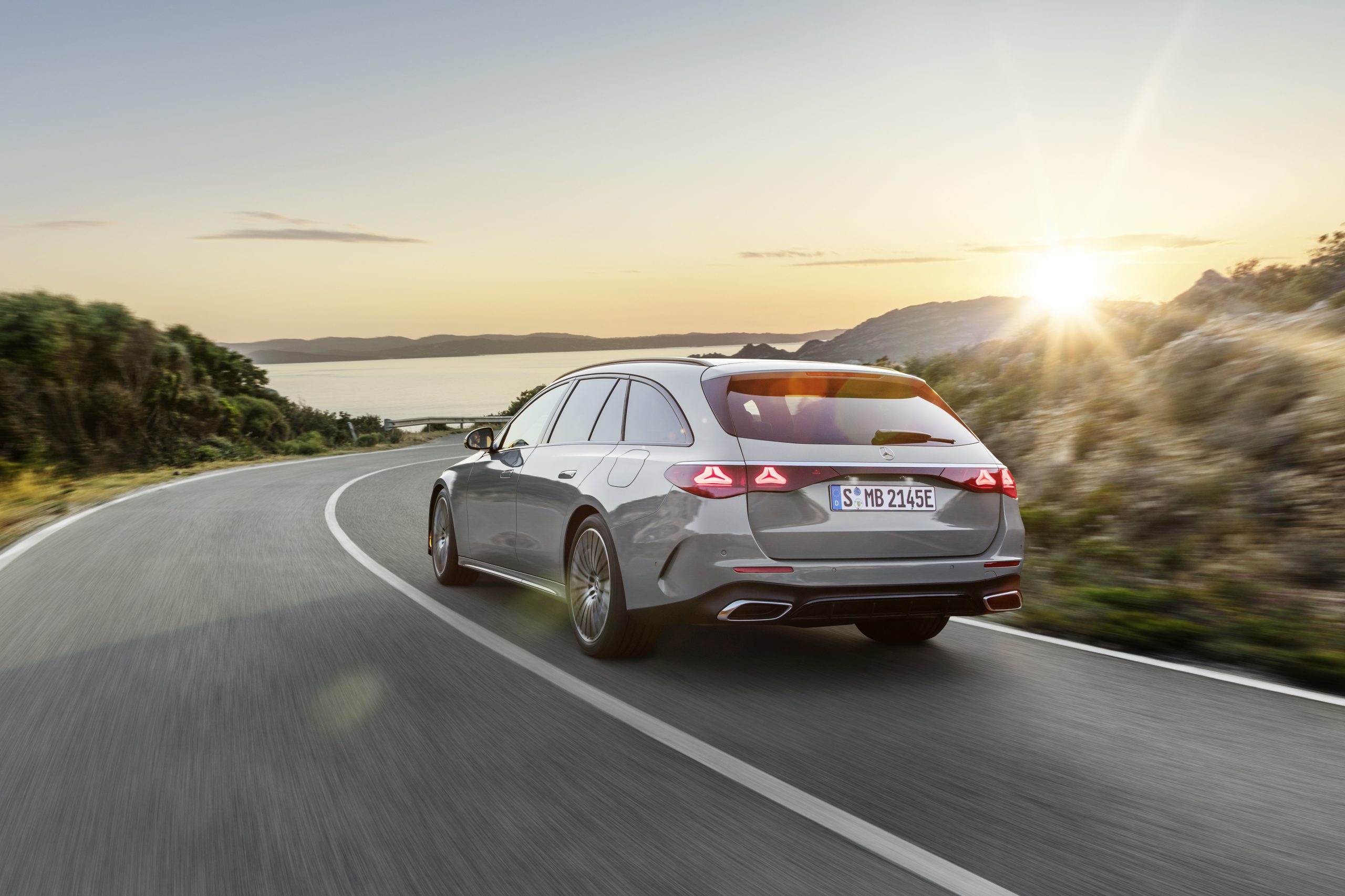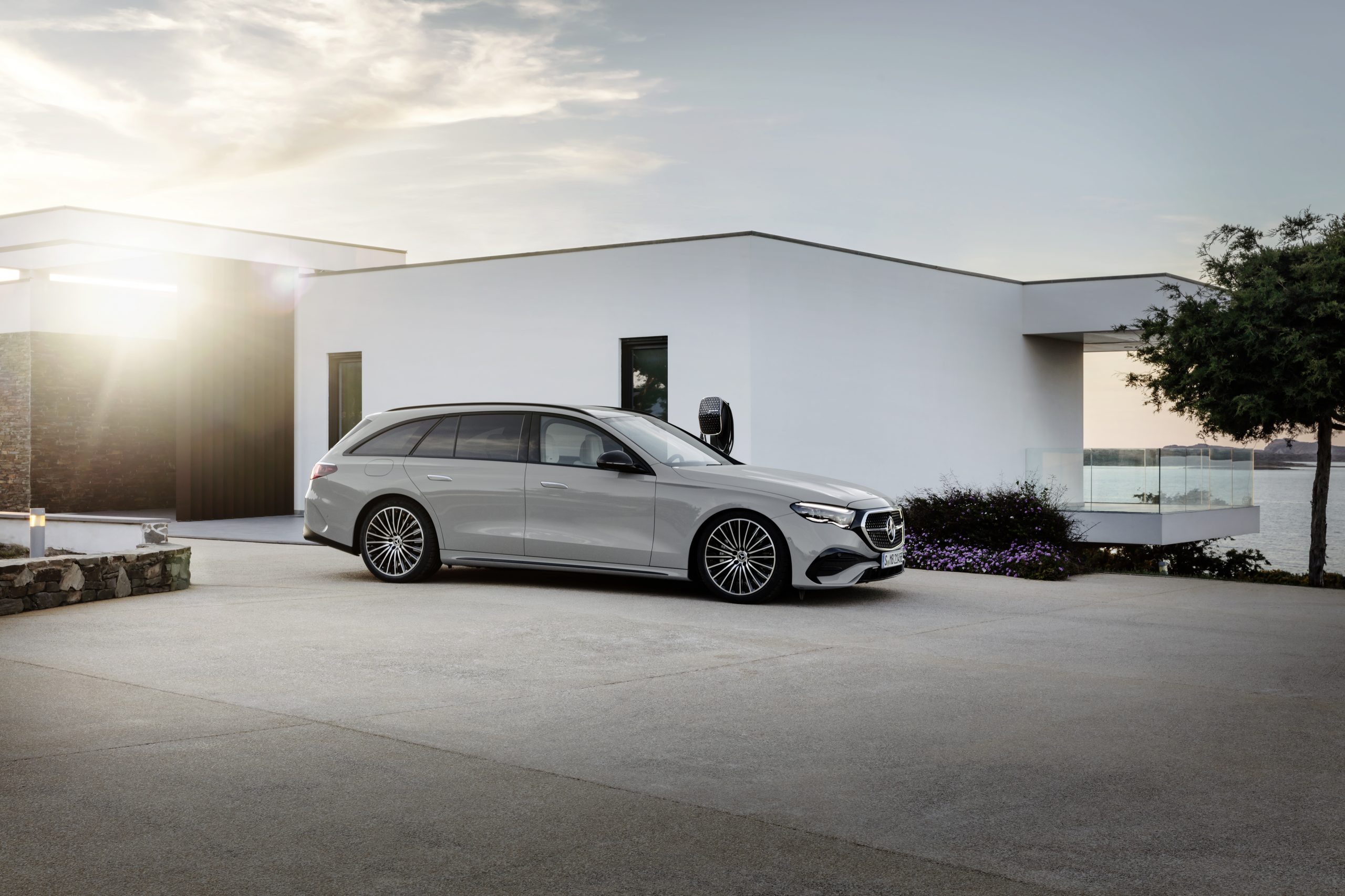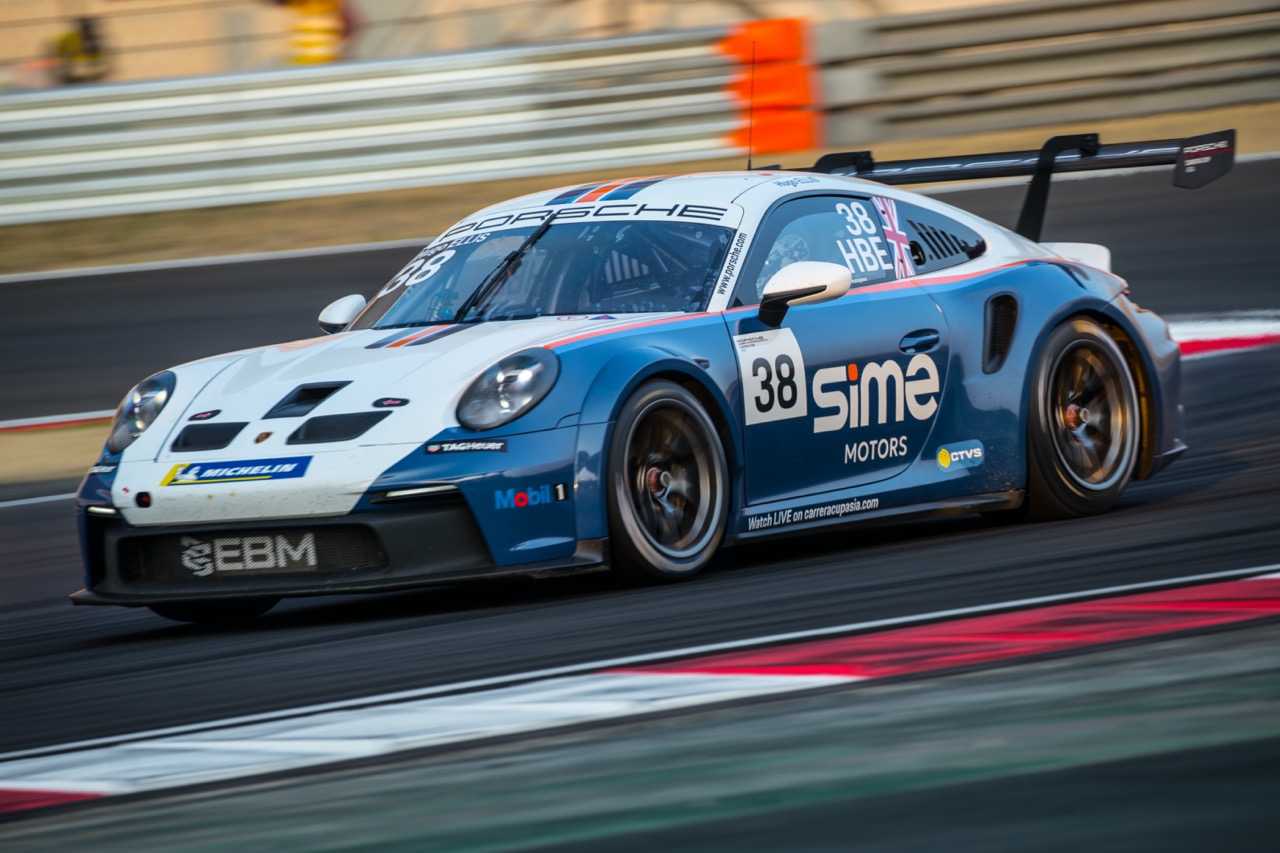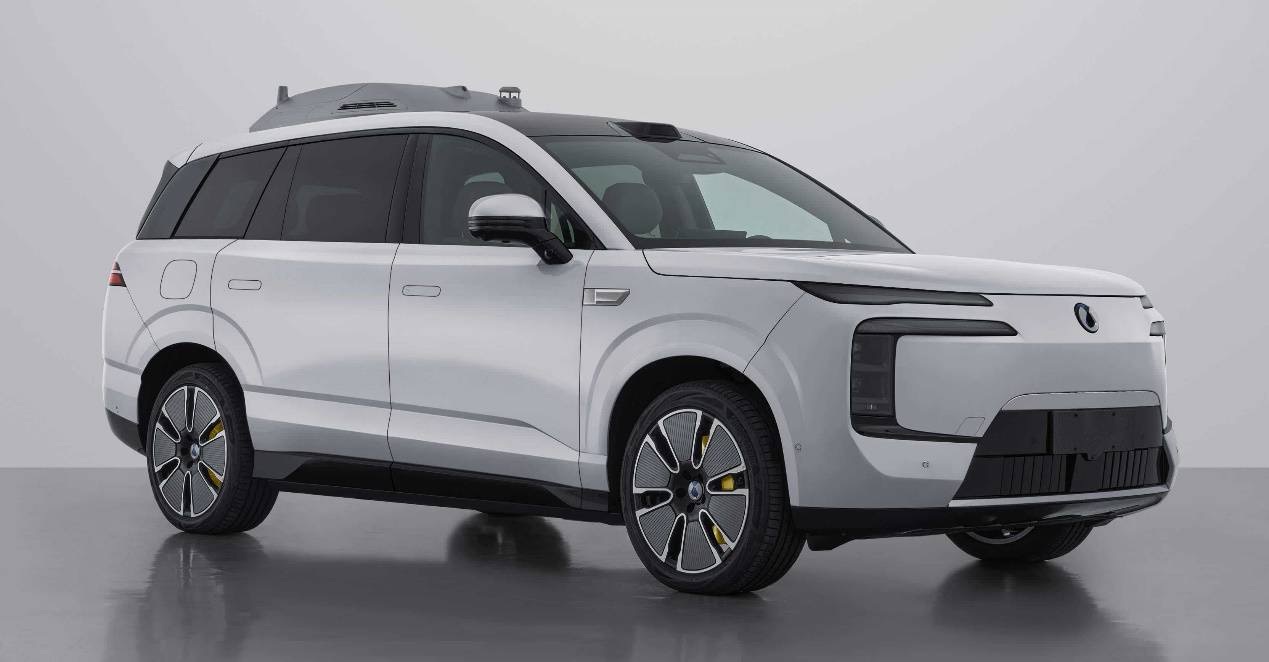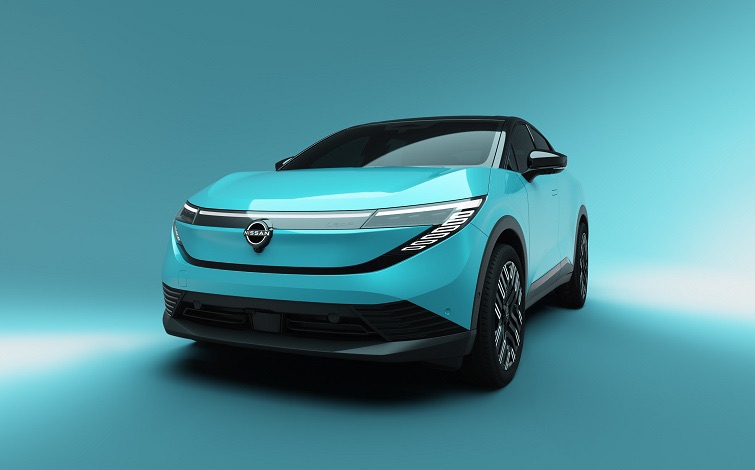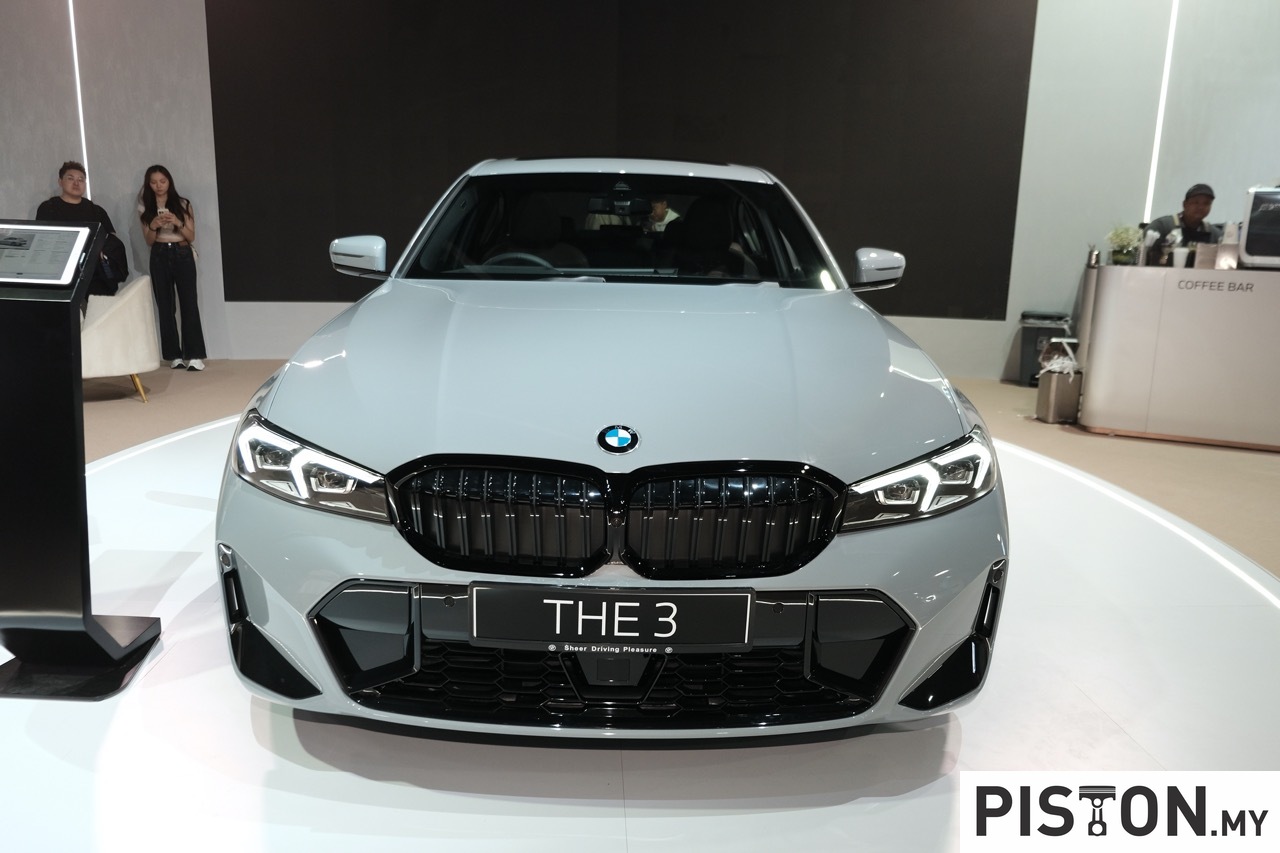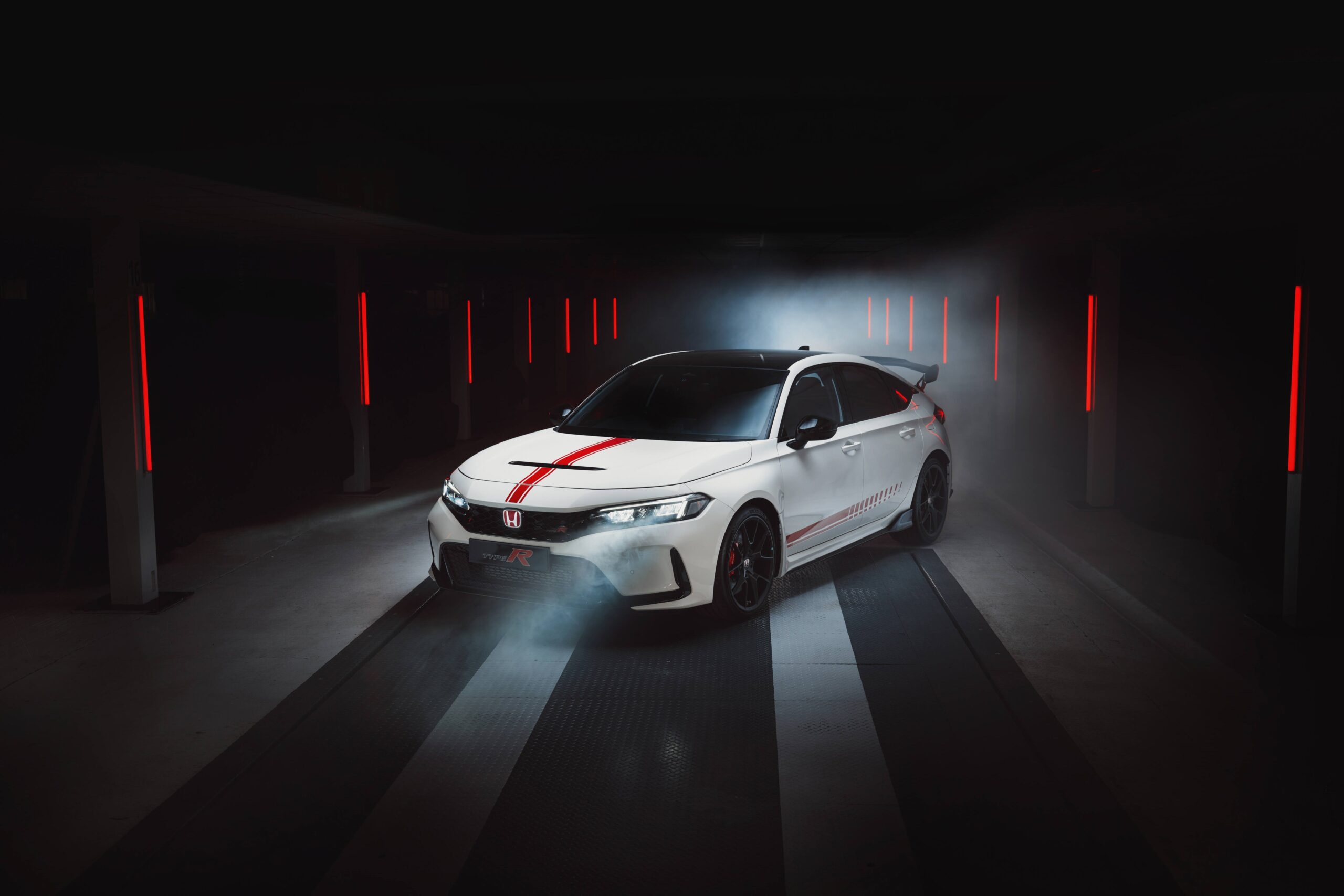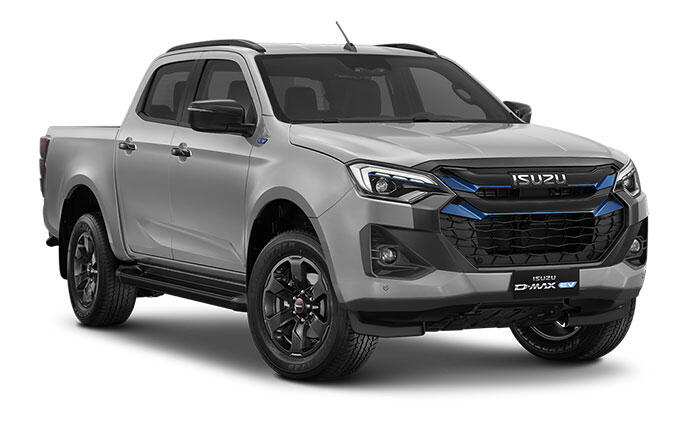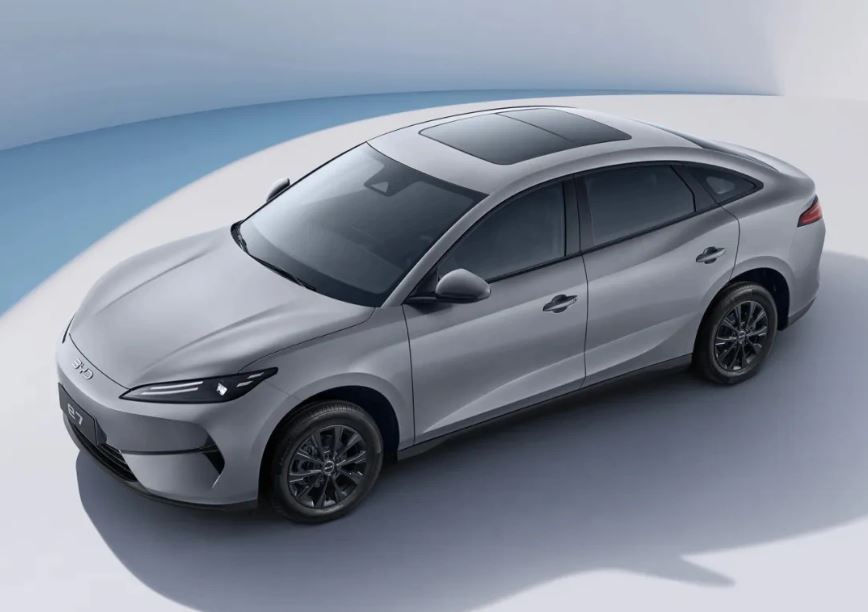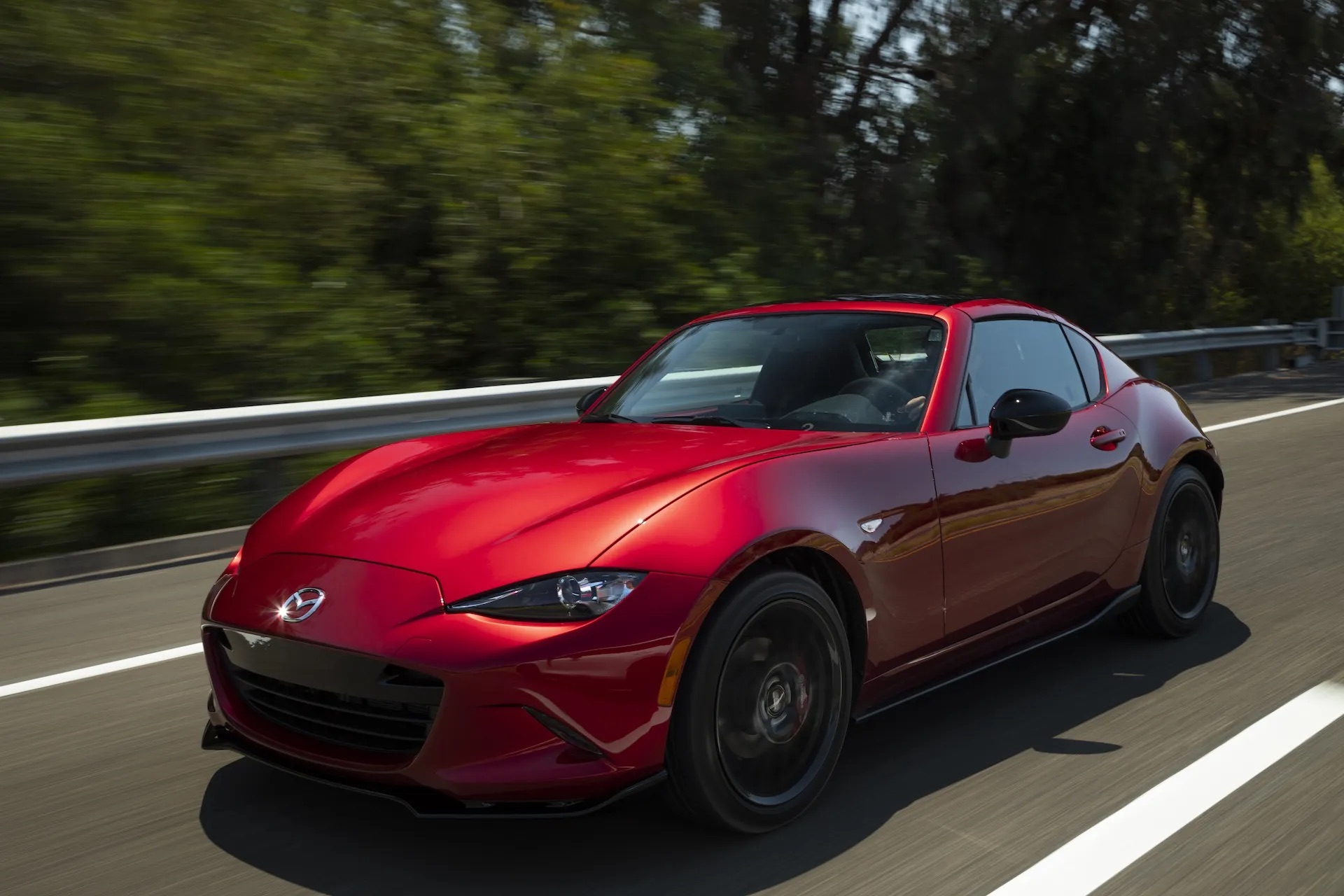Mercedes is aware that not all customers desire an SUV. It has not only added an estate version to the most recent C-Class, but it is also preserving the long-roof E-Class for at least another generation.
Mercedes-Benz E-Class Estate models have been a consistent success for estate cars in the higher mid-range and luxury class since they first debuted in 1977. The latest model in this range of sporty space sensations, the E-Class Estate from model series 214, is the seventh generation.
Its wheelbase has been stretched by 22 mm to 2961 mm for additional legroom while the width has increased by 28 mm to 1880 mm for greater elbow room. Length is up by 4 mm to 4949 mm and height has slightly increased by 1 mm to 1469 mm.
This is considerably the biggest of the three Mercedes wagons and is even larger than its predecessor.

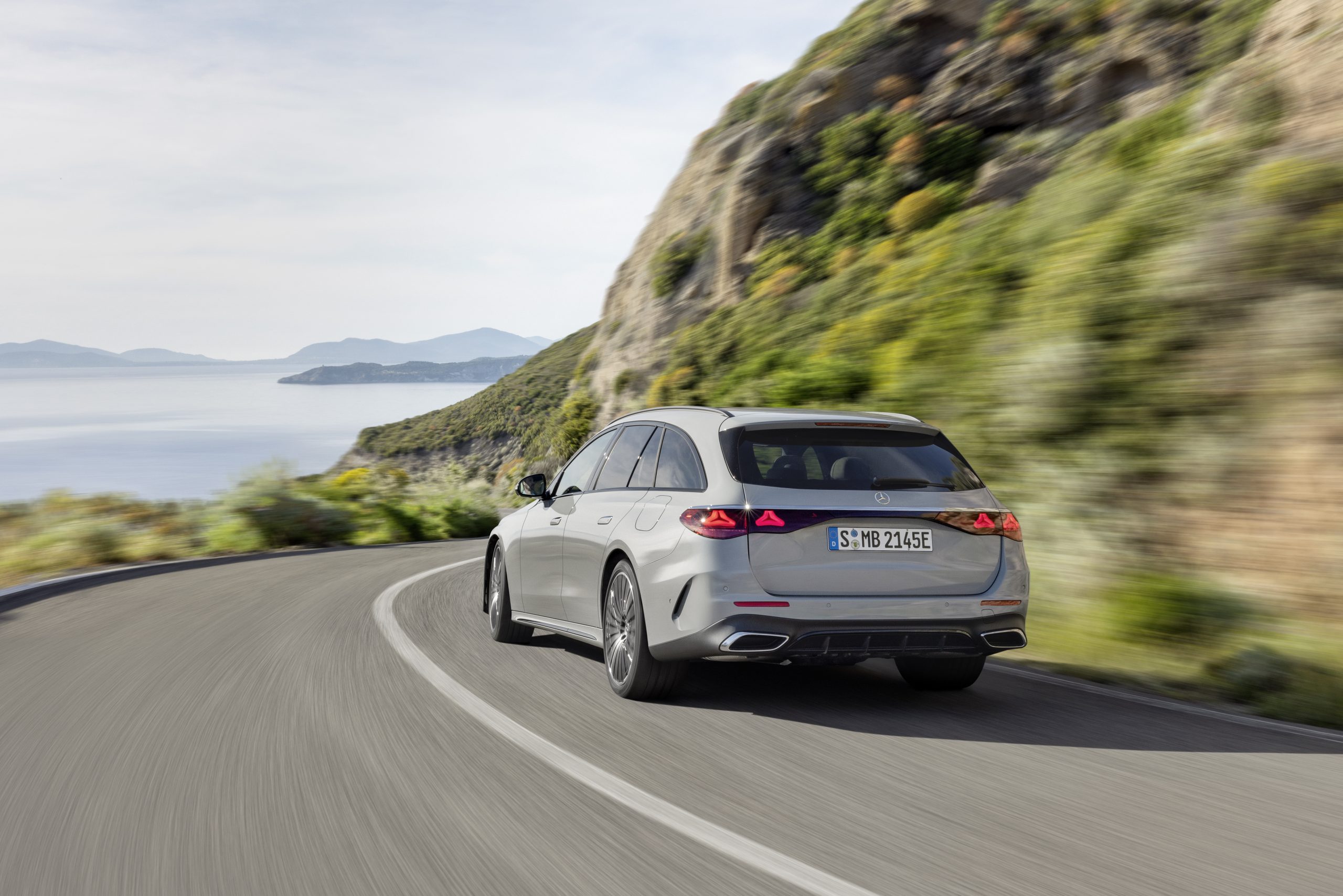
Exterior
With its new design, the Estate, like the Saloon before it, bridges the gap to the Mercedes-EQ avant-garde trendsetters while also carrying on the long model history of the original E-Class. A classic estate car’s look has balanced proportions. They can be identified by their balanced back overhang, a long bonnet with power domes, extended wheelbase, and short front overhang.
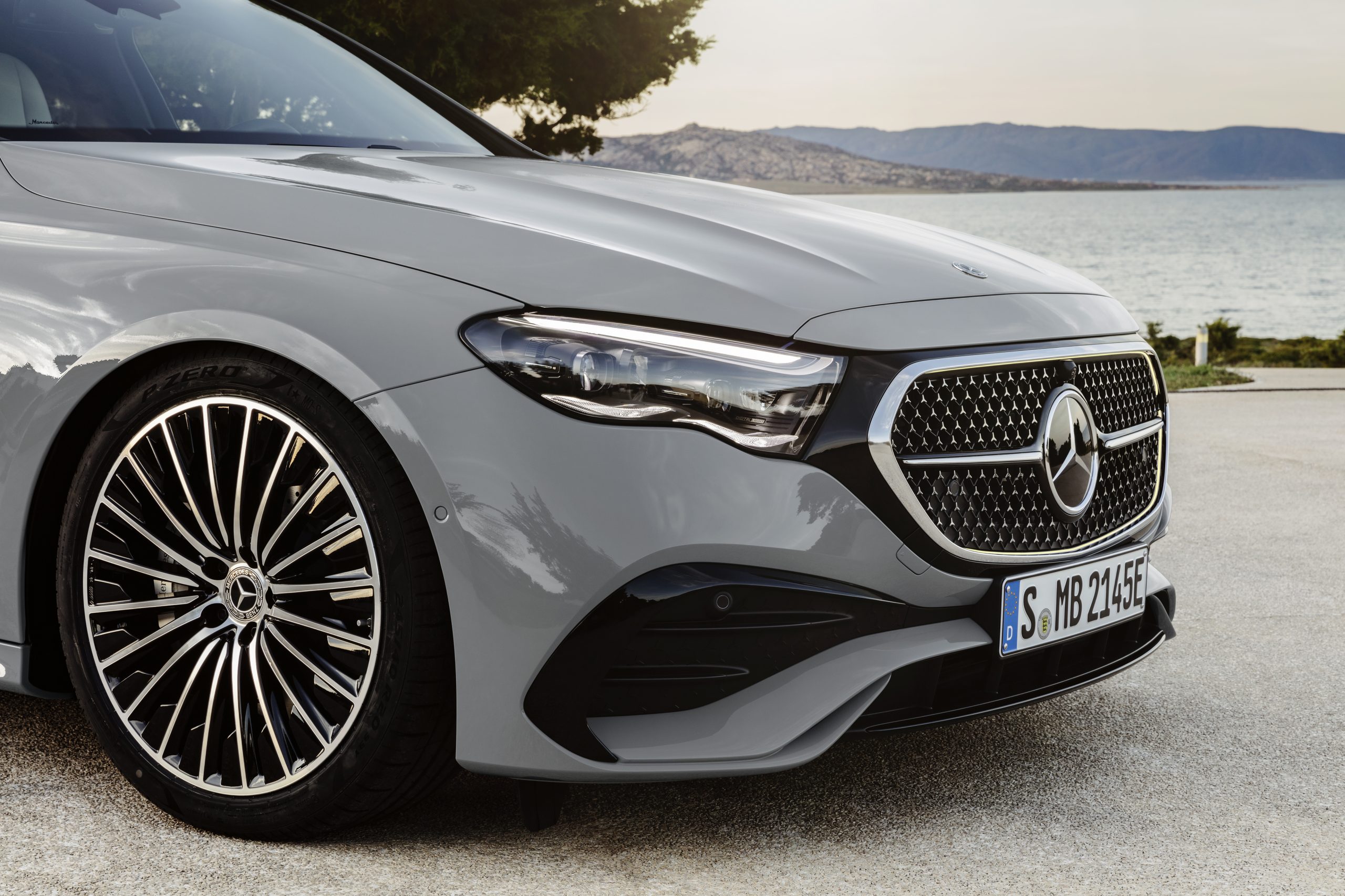

You may say that it has a passing resemblance to the previous X218-code CLS Shooting Brake.
The iconic three-pointed star is displayed either on or above a black-framed (and optionally illuminated) grille depending on which trim chosen. The same star is also repeated four times in the LED taillights.
The flush-fitting door handles that are common to Mercedes-Benz luxury-class models are available on the E-Class Estate. When the driver approaches or touches the door handle’s exterior, they extend electrically. The roof rails that are installed combine both design and function. Light-alloy wheels up to 21 inches in diameter with high-quality surfaces complete the side profile.
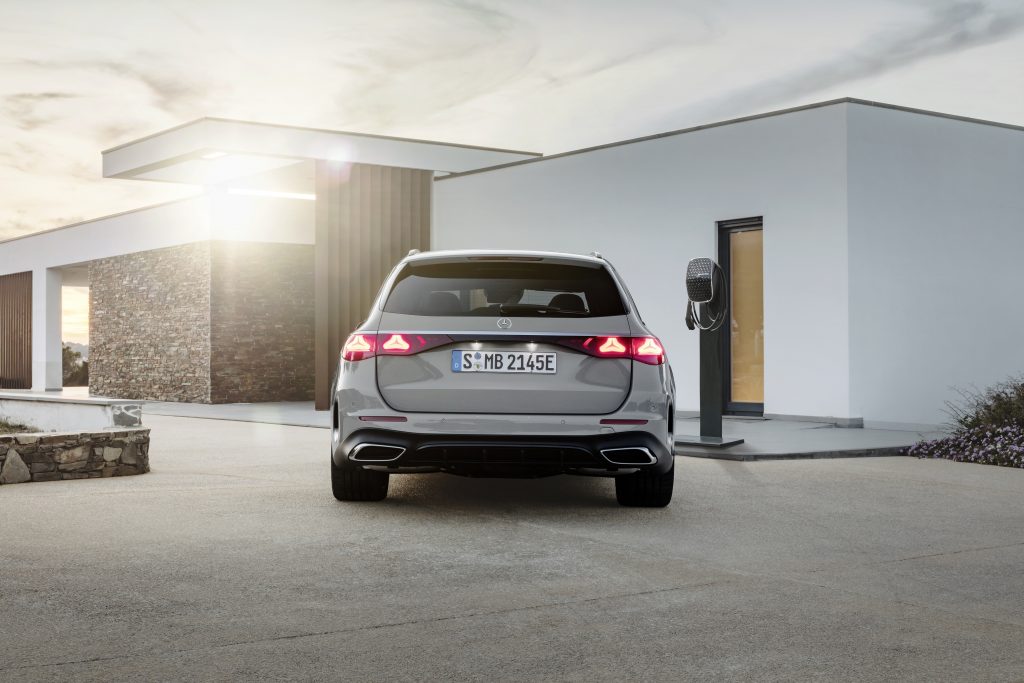
The new E-Class has high-performance LED headlamps as standard. As an optional extra, Digital Light is available without and with a projection function.
Comparing trunk dimensions of the old and new wagons shows the new car has definitely sacrificed a little space for style. While the seats-down figures say capacity has improved almost imperceptibly from 1,820-1,830 litres, with the rear seats in place it actually falls back from 640 to 615 litres.
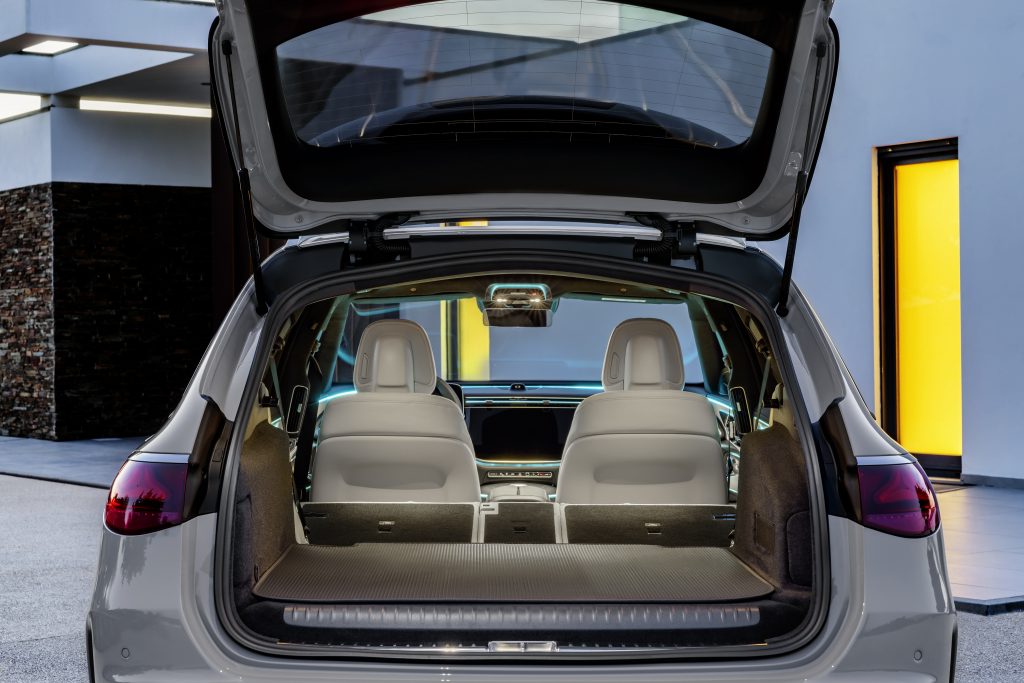
Interior
With the new E-Class, Mercedes-Benz is now taking the third significant development step in MBUX (Mercedes-Benz User Experience). Screens and the MBUX infotainment system thus share a new, powerful central onboard computer.
E-Class Estate buyers have the choice between the MBUX multimedia system Premium and the optional MBUX multimedia system Premium Plus. The latter additionally includes the passenger display. In this case the large glass surface of the MBUX Superscreen extends from the A-pillar on the passenger side to the central display.
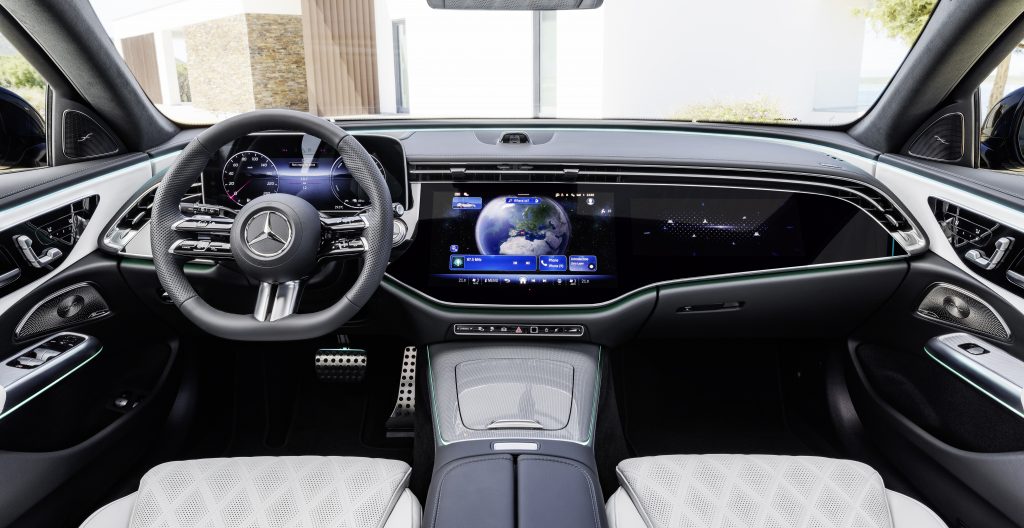
The big glass surface of the MBUX Superscreen extends to the central display if the E-Class Estate is fitted with the optional front passenger screen. The driver’s range of vision includes a high-resolution driver display that is visually detached from this.
For the central display, the glass surface is extended downwards accordingly. The profile becomes flat towards the outer edges.
The models without a passenger display feature a large trim element that extends to the centre. Visually detached, the central display appears to float above the concave surface of this trim element.
The light strip from the Active Ambient Lighting illuminates the front portion of the instrument panel. This extends from the windscreen in a broad arc, past the A-pillars, and into the doors.
The contours of the seat surface and backrest flow from the inside to the outside and appear to float above the base of the seat thanks to their layer design. If the customer opts for leather upholstery, the seats are designed with elaborate longitudinal fluting, created in individual panels. The nappa leather seats feature quilted and perforated diamond patterns that follow the shape of the seat. Perforations can also be found on the Microcut seat that is available as part of the AMG Line’s interior.
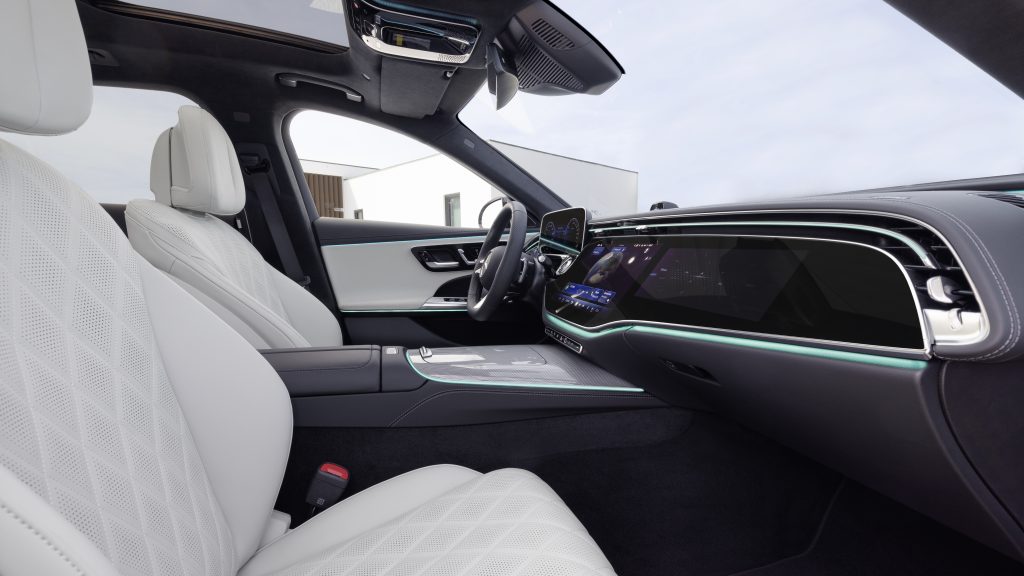
E-Class Estate buyers can choose between numerous interior colour combinations. The palette ranges from light beige combined with space grey, including a classy pearl effect, to the sophisticated tonka brown and the cool and technical-looking grey.
The interior surfaces have a new fine-grain finish from the base trim level upwards. The interplay between analogue and digital sensory experience is further exemplified by the wide range of trims with innovative, natural or technoid surfaces. Exclusive to the E‑Class is interior trim of open-pore wood – dark ash – which is backlit by the Mercedes-Benz pattern.
In addition to other trim panels made of open-pore woods, the S-Class’s well-known Manufaktur piano lacquer black flowing lines variation is also offered. A silver metal-mix interior trim is another eye-catching feature. It also has a high-gloss finish.
The main icons on the central and optional passenger displays are now more clearly displayed and also colour-coded to match smartphone tiles.
With two display styles (Classic and Sporty) and three modes (Navigation, Assistance, Service), the graphics of the screens can be individualised. In the “Classic” style, the driver is greeted by the familiar display layout with the look of two dial instruments. Varying content with vehicle-related information is displayed between the two tubes.
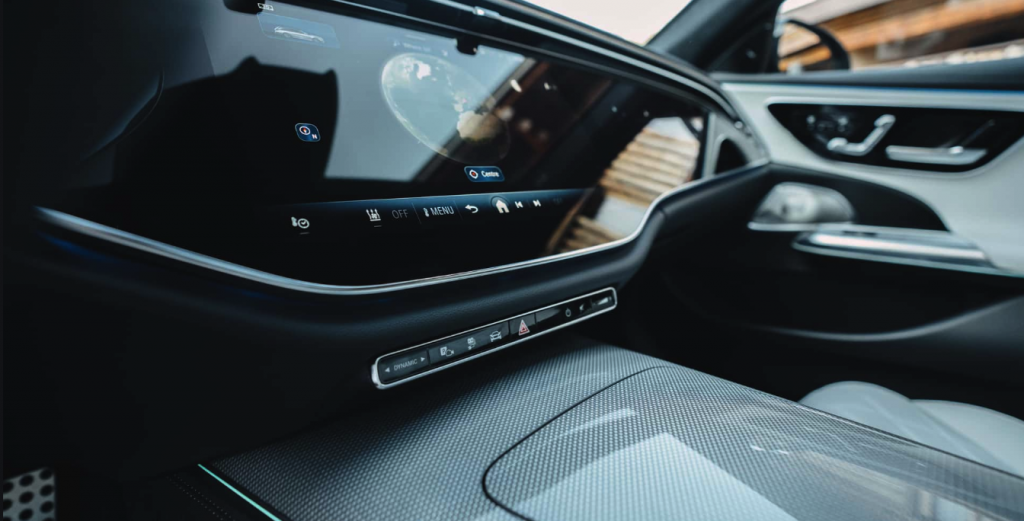
For the first time in this class, at the touch of a button, the optional 3D driver display allows spatial scene perception with a real depth effect. The system uses autostereoscopy for the 3D effect: here, the LCD display combines a special pixel structure with a controllable LCD aperture grill. The result is that the left and right eye see different pixels of the LCD, creating the illusion of depth.
Additionally, the driver can use the vehicle’s own selfie and video camera (optional) for the collaborative app “Webex” and the video conferencing app “Zoom”.
When the new E-Class Estate is launched, customers will be able to use templates for standard routines. They also have the option of creating routines themselves.
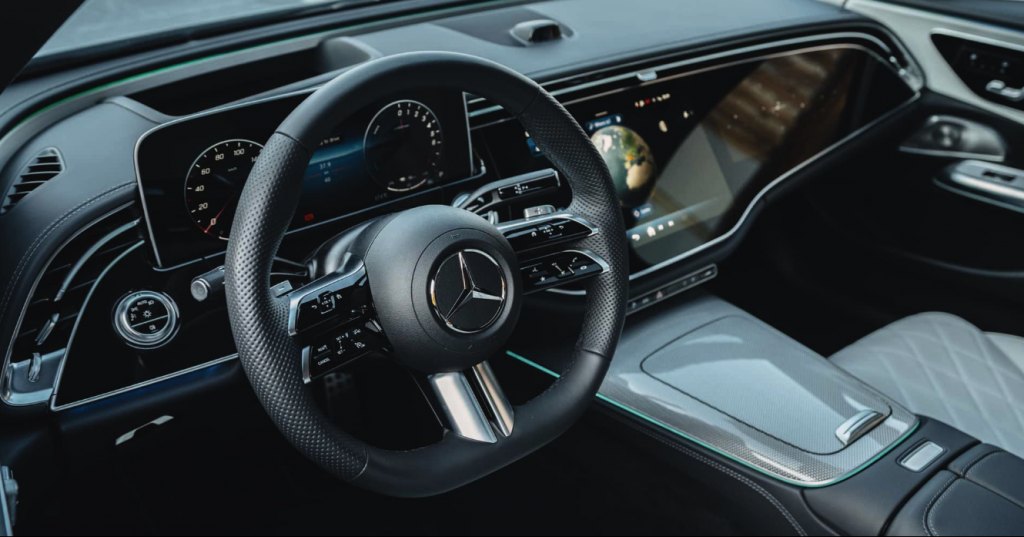
With the “Online Music” service, Mercedes-Benz has now fully integrated the major music streaming services – Spotify, Amazon Music, Tidal and Apple Music – into the MBUX infotainment system. Apple Car Play and Android Auto come as standard.
Other, possibly more practical technology includes an automated parking system and Digital Key, which is now available for both Apple and Android devices. Both are included as standard.
Powertrain Options
The 2024 Mercedes E-Class Estate will most likely not make it to the Malaysian market, therefore there are no specific powertrain options for us. But there is quite an impressive offering for global markets.
The E300e, the only PHEV option in the Euro lineup for this coming debut, combines a 201 hp 2.0-litre, four-cylinder petrol engine with a 127 hp electric motor placed inside the nine-speed automated gearbox. The PHEV can accelerate from 0 to 100 km/h in 6.5 seconds thanks to a total system output of 308 hp. Its 25.4 kWh battery is said to provide a range of over 100 kilometres. That’s twice as far as the PHEV it replaces.
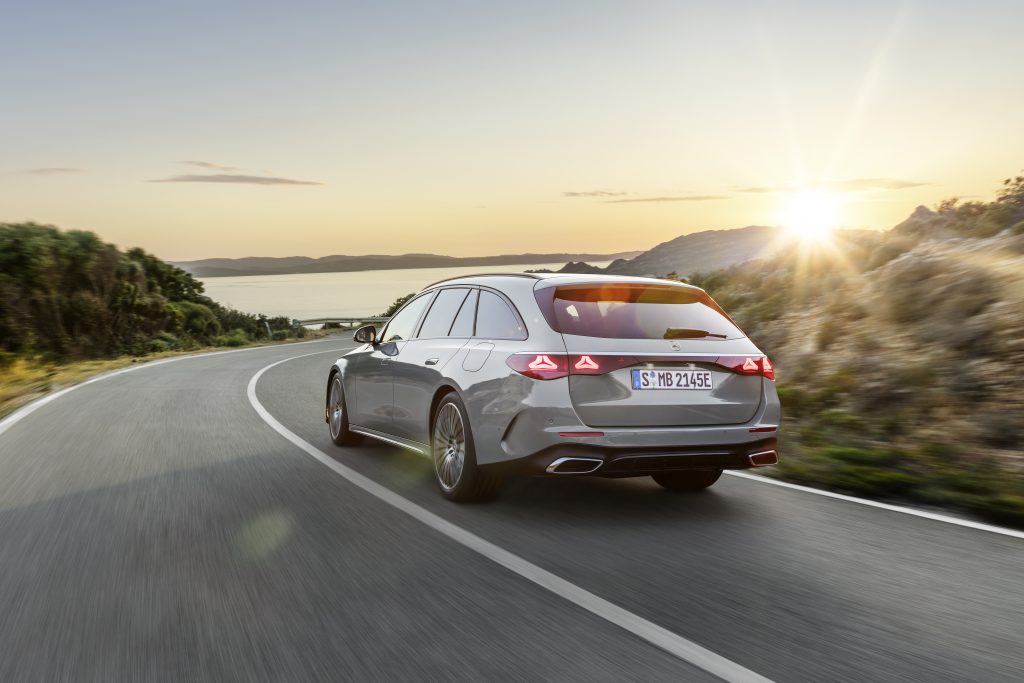
Two 2.0-liter mild hybrids are the only other engine choices at the moment, according to Mercedes, though more four-cylinder PHEVs with both diesel and petrol engines as well as a six-cylinder diesel will eventually arrive in Europe. The E200’s 201 hp and E220d’s 194 hp are both directly derived from the sedan, however this time around, the e-motor produces 23 hp rather than 20 hp.
Reports state that there will also be AMG variations, though it is unclear if the V8 will be offered in those. Along with the Audi RS6 Avant, the BMW M5 Touring is anticipated to make a comeback in 2025, thus the E63 Estate will have to contend with some new competition.
Like the Saloon, the new Mercedes-Benz E-Class Estate will be produced at the Sindelfingen location, in Building 46 together with the GLC.
